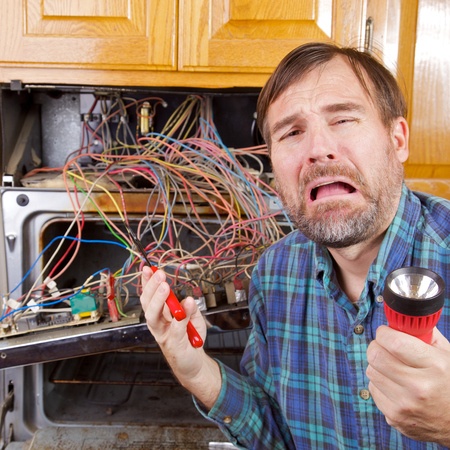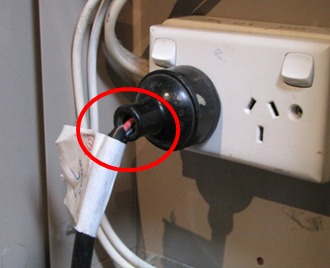
25 accidental deaths related to electric shocks were recorded in Australia in 2010. According to the Electrical Regulatory Authorities Council, 96% of these deaths were non-electrical workers and the general public as well as almost half occurred in the workplace.
As we become more aware of the dangers of electric shock, we have seen these numbers reduce. The last 20-years continue to illustrate a decrease in the number of deaths – from an annual average of 49 deaths in the 1990s to 25 in 2000s which coincides with public awareness of the dangers that can occur while using or working with electricity.
As electric shock is an almost totally preventable accident, it is still critical that we be aware of its dangers. Here are five simple, yet life-saving tips to avoiding electric shocks around your home and workplace.
DIY is not an option
The only work you can legally DIY are changing light bulbs, plugging in appliances or installing DIY garden lighting that run on extra low voltage (ELV).
To do-it-yourself or have a semi-qualified person do it for you, is exposing yourself to a raft of safety and legal issues. In the most extreme cases, the event of an injury or death resulting from illegally installed wiring could be criminally liable and face sanctions up to and including jail. If there is damage to property (for example, a fire), your home insurance would most likely be void.
If you want to install, repair, alter, move or add to any electrical installation, then you need to use a qualified person that holds an electrical contractor license.
Electricity and Water Don’t Mix
This one is simple – keep all appliances away from any water.

In the case you do accidently drop an appliance into the water while it is plugged in, don’t reach in to retrieve it or attempt to unplug it. Go to your switchboard and switch the power circuits to the off position (the safest option is to flick the ‘all power switch’)
Once the circuit is off, you can safely unplug and remove appliances from the water. Your options are to dispose of the appliance or wait until it is fully dry and take it to your electrician to test whether or not it is safe to use.
Cover Exposed Sockets
This one is especially significant if you have young kids – they are notoriously curious and will put things into power sockets. Install power socket protectors on each socket in your home.

There are different options available when it comes to power socket protectors – you can buy cheap plug-in protectors or you can hire an electrician to install ones with built-in retractable covers, that’s snap back when not in use.
Be aware of Power-boards
Power-boards are brilliant: They give you the easy convenience of extra sockets where you need them. Although there are few things you need to be aware of before you plug any appliances into them.

Remember that each power board has a maximum load. If you plug in a number of heavy use appliances (kettles, heaters, irons, dryers) into the one board you can overload the board causing a tripped circuit or a fire.
- Don’t add double adaptors to power boards or add one board onto another board. You are increasing the risk of overload and shock. Only use power boards that comply with Australian Safety Standards, ideally with overload protection built in. Cheap imported boards may not comply.
- Don’t use power boards in dusty environments like a tool-shed or workshop.
- Don’t spray cleaners, insecticides or detergents directly onto a power board.
Something few people are aware of is that power boards are designed for short-term use only. So, if you find you are using a particular board everyday, consider getting additional power sockets installed by a professional electrician.
Replace Damaged Equipment
Sometimes it is easy to overlook or ignore equipment that occasionally gives off sparks, a burning electrical smell, gives out small electrical shocks or frequently trips your circuit breaker. To ensure your home is safe for you and your family, it is critical that you make note of these damages and get them fixed or replaced.

Lastly, it is important to know what to do in the case that a loved-one is a victim of electric shock. Always disconnect the power supply before trying to help, this means it will be safer for everyone.
Sometimes victims of electric shock may appear to be unhurt, it’s important that they still be treated as a victim of electric shock because some injuries and further complications may not yet be obvious. An examination in hospital is important after any electric shock.





